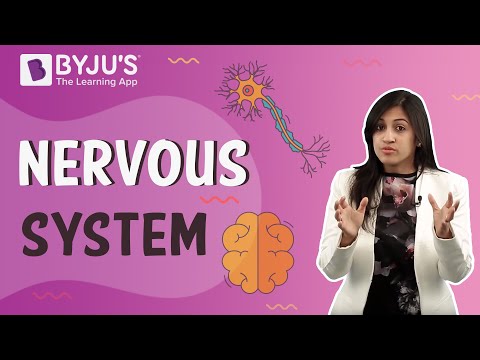The human brain is divided into three major parts, Forebrain, Midbrain and Hindbrain. The brain is the control centre of all the bodily functions and information processing.
Download the Complete Guide to NEET UG Prep
Download Now
Hindbrain Structure
Hindbrain is the lower part of the human brain near the brain stem and is also known as rhombencephalon.
During embryonic development, the anterior end of the neural tube differentiates into three bulges, which are hindbrain, midbrain and forebrain. They differentiate further and develop into the adult brain.
The hindbrain subdivides into Metencephalon and Myelencephalon. The metencephalon gives rise to the Cerebellum and Pons, whereas myelencephalon gives rise to the medulla.
So in an adult, the hindbrain comprises Cerebellum, Pons and Medulla or Medulla oblongata.

Pons
It is a part of the brain stem. It is present below the midbrain and above medulla. It consists of neural tracts, which interconnect different parts of the brain.
It helps in conducting signals from the brain to medulla and cerebellum and carry the sensory signals to the thalamus. Pons helps in relaying information between cerebellum and forebrain.
It carries nuclei for four cranial nerves, namely trigeminal (V), abducens (VI), facia (VII), vestibulocochlear (VIII).
It is a part of the network of neurons in the brainstem, which regulates alertness and sleep-wake cycle.
Cerebellum
The cerebellum has a convoluted surface, which provides more surface to neurons. It is present posterior to the pons. The cerebellum is rich in Purkinje fibres and granule cells.
It is an important part of motor control. It receives sensory signals from the spinal cord and other parts of the brain.
It contributes to the coordination, precision and fine-tuning of the motor responses. Purkinje fibres are long and play an important role in coordination. The cerebellum also plays an important role in motor learning, where short granule cells play their part.
The cerebellum is responsible for equilibrium, posture and muscle tone. It is also known to store unconscious memories and motor skills like swimming, cycling, etc.
Injury to cerebellum results in uncoordinated muscle movements. Activities such as putting a thread in the needle, which requires more precision, become difficult to perform.
Medulla
The medulla (or medulla oblongata) is the posterior part of the brain, which continues to the spinal cord. It is a long stem-like structure and constitutes the brain stem along with midbrain and pons. Its cavity is known as the fourth ventricle, which continues with the spinal cavity.
The medulla consists of a thick wall having a bundle of axons forming nerve tracts, which connect the spinal cord to different parts of the brain.
The medulla plays an important role in regulating various life processes such as respiration, blood pressure, heartbeat, gastric secretions, etc. It also contains the centre for reflex actions such as vomiting, coughing, swallowing, etc.
Activities Controlled by Hindbrain
The hindbrain regulates many vital processes, which are important for survival such as respiration, cardiovascular reflexes, motor activities, sleep-wake cycle, etc. The main functions regulated by the hindbrain are:
- Pons- It controls the sleep-wake cycle, responsible for generating dreams.
Pneumotaxic centre present in pons regulates changes from inhalation to exhalation.
The four cranial nerves (V-VIII) having nuclei in the pons region regulate respiration, involuntary actions, bladder control, hearing, posture, maintaining equilibrium, chewing, swallowing, taste, eye movement, facial expressions and sensation.
Injury to the pons region may result in difficulty in walking, touch, swallowing, etc.
- Cerebellum- It is responsible for the coordination and fine-tuning of motor activity. It helps in the precision of muscle movements. It regulates equilibrium, posture and muscle tone.
It is also known to store implicit memories and motor skills like swimming, cycling, etc.
- Medulla- It controls various autonomic functions.
It regulates respiration. It is done by chemoreceptors, which sense the change in the blood pH.
It regulates cardiovascular reflexes, heartbeat.
It regulates reflexes such as swallowing, vomiting, coughing, etc.
This was a brief note on Hindbrain. Explore notes on other important concepts related to NEET, only at BYJU’S.
Also Check:
- Function Of Pons
- Medulla Oblongata
- Thalamus Function
- Process Of Neural Communication
- Flashcards Of Biology For NEET Neural Control And Coordination
Recommended Video:

Comments